by Janelle Sorensen, Content Director at Elemental Green and Chief Strategist at gro gud
Think sustainable home design is just a fad? Think again. Green is growing and growing and growing. In 2017, 58% percent of survey respondents indicated their typical home achieved one or more green certifications. Today green home building is becoming the status quo.
Every year new products and technologies emerge – raising the bar on the possibilities. And after watching trends in sustainability for nearly two decades, I’m excited to report that the coming year looks better than ever! Hop on board with these 18 trends for sustainable homes in 2018!
SUSTAINABLE HOME DESIGN TRENDS FOR 2018
#1 – Resiliency
After a record-breaking year of catastrophic destruction due to weather and climate change, and with similar natural disasters expected to increase in intensity and frequency in the coming years, “resiliency” is becoming the new “sustainability.”
Not only are durable materials and designs becoming a part of the conversation, non-toxic materials are becoming more important as well as the mass destruction of buildings made from toxic materials essentially creates Superfund sites out of communities – leaving extremely high levels of pollution in the water, soil, and air.
Thankfully, many of the materials and technologies already exist, like prefab homes that can withstand hurricane-force winds, cladding materials that are naturally fire resistant, and battery systems that reserve electricity for unanticipated power outages.

Featured Product: YETI 3000X LITHIUM PORTABLE POWER STATION
With no gasoline needed, the Goal Zero Yeti 3000X operates with zero fumes and zero noise for an easy-to-use, plug-and-play way to power all your essential electronics and appliances at the push of a button. It’s safe enough to store inside your home or apartment for running lights or appliances during an emergency power outage and durable enough to take along outdoors if needed. Comes with a wall charger for recharging via AC outlet. Or pair it with solar panels for a solar generator setup.
#2 – Extreme Energy Efficiency
Far beyond buying Energy Star appliances (which is still great!), an increasing amount of people are building or renovating their homes using a more holistic energy efficiency approach. Buildings account for 70% of energy use and nearly 40% of CO2 emissions in the U.S., so it’s no wonder builders and homeowners are increasing efficiency in as many ways as possible such as using super-insulating materials and passive solar design. At the farthest end of the spectrum are net zero energy homes that generate as much electricity as they use – and California’s accelerating the adoption by mandating that all new home be net zero energy by 2020 (that’s right around the corner!) Interested in having a net zero energy home? We want you to have one! Check out our net zero hub to learn steps to take, find rebates and pros, and much more!
Featured Product: Natural Light Energy Systems Solar Skylight Kit
Eliminating the need for artificial lighting during the day is a key component for saving energy and achieving net zero goals. Tubular Daylighting Devices (TDDs) are essentially glorified skylights (but better) that shoot concentrated sunlight through optical domes into your house. Installed on pitched roof Fiberglass-Asphalt shingle roofs typically in under two hours, you will quickly realize the benefits of a tubular skylight over incandescent and even traditional skylights. In addition to the free daytime operating cost, Natural Light tubular skylights do not contribute to heat loss or gain, unlike standard framed-in skylights. Hurricane Tested. ENERGY STAR qualified. 25-year warranty.
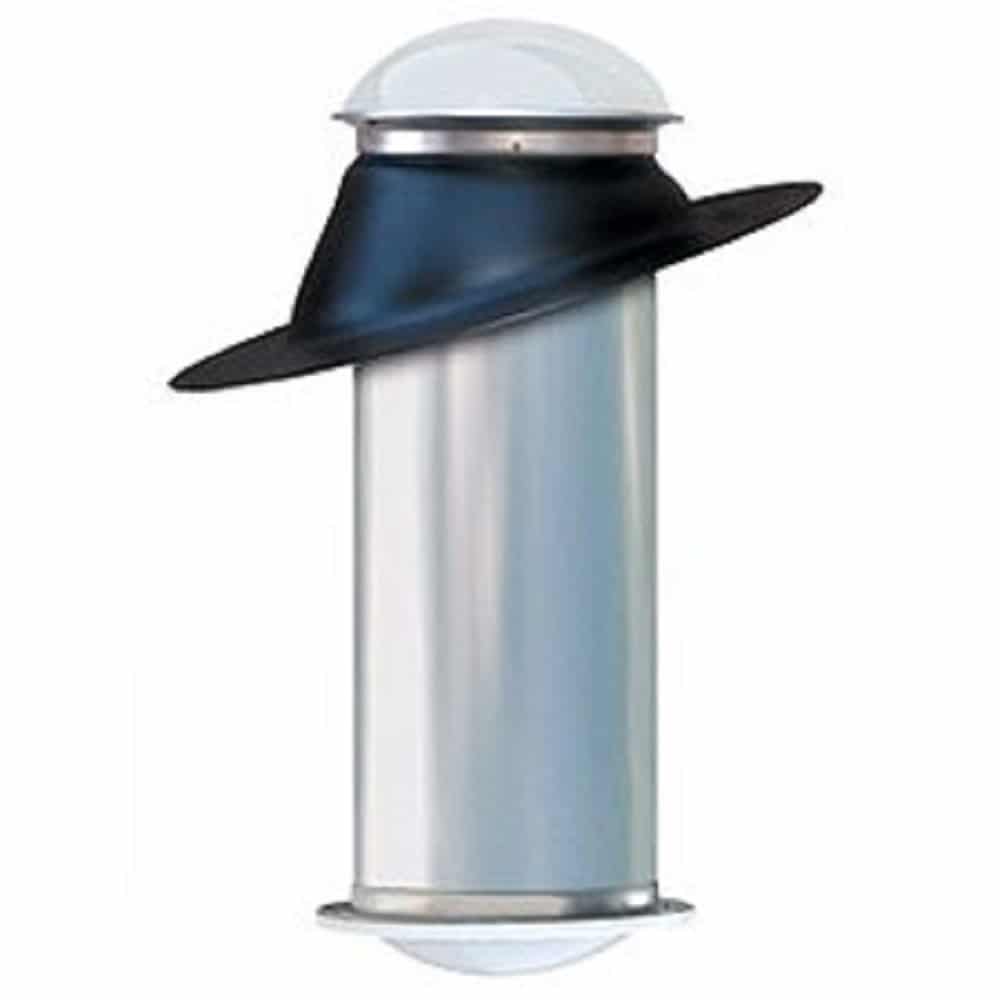
#3 Water Filtration
Adding a water filtration system to your home is a 2017 trend that will carry over into 2018. Rising health concerns and water crises in the news have sparked people’s desire to check out how their water quality measures up and to take precautions to protect and improve it. Healthy living is gaining in prominence, too, and clean water is a key ingredient.
Also, despite costing up to 2,000 times as much as tap water (and not necessarily being any purer than tap water), last year bottled water became the most popular beverage sold in the U.S. And the amount of waste it’s generating is staggering. Hugo Tagholm, of the marine conservation group Surfers Against Sewage, told EU media network EURACTIV that the figures were devastating. “The plastic pollution crisis rivals the threat of climate change as it pollutes every natural system and an increasing number of organisms on planet Earth.”
(Concerned about what’s on tap? Check out our article on how to choose the best whole house water filtration system.)
Every person in the U.S. has unregulated contaminants in their drinking water. For some of these, we know that millions of people do have them at levels that are a public health concern.

Featured Product: Bluewater Reverse Osmosis Water Filters
Bluewater uses its own patented SuperiorOsmosis™ technology to deliver a whole new generation of water purifiers with outstanding performance and design – delivering cleaner, healthier drinking water from the tap and drastically cutting the water wastage common to traditional reverse osmosis technology. For example, a Bluewater water purifier can generate around 80% clean drinking water and less than 20% wastewater. Most traditional RO units usually generate far more wastewater than clean water. Bluewater’s patented technology not only removes contaminants such as toxic metals like lead, chemicals, pharmaceutical residues, micro-organisms and other harmful substances and particles down to 0.0001 microns, but also remove the micro-plastics increasingly turning up in tap water. Innovated in Sweden, SuperiorOsmosis™ delivers unmatched purification efficiency, operating capacity, and service life.
#4 – Renewables Everywhere
Installing renewable energy systems in your home isn’t an anomaly anymore, as more people opt for solar and wind driven systems over fossil fuels. Falling prices have given people greater access to these types of alternative energies, plus numerous PR campaigns have educated us on all of the benefits. “The cost of renewable energy keeps going down, comparing favorably with coal,” writes Erica Gies for Insideclimate News. “Battery technology also continues to improve and get cheaper. And digital technology is making electric markets cleaner and more efficient, as well.” It’s the perfect trifecta for progress across the board – not only is it easier for an individual homeowner to use a renewable energy system on their home or land, it’s also empowering utility companies and local governments to start transitioning to 100% renewables. According to the Sierra Club, across the U.S. over 50 cities, more than five counties and one state, have already adopted ambitious 100% clean energy goals.
#5 – All Electric Homes
Transitioning to renewables means phasing out gas as an energy source; thus, the rise of the all-electric home. One out of every four homes in the U.S. is all-electric already, according to the most recent survey from the U.S. Energy Information Administration. Taking the place of the gas stove is the induction range. Standing in for the gas water heater is the heat pump water heater. And, kicking the gas furnace to the curb are heat pumps and radiant heating AND cooling. “Right now people understand the benefit of having an electric vehicle, and soon I think they will also understand the benefits of having all-electric homes,” said Rachel Golden, a senior campaign representative at the Sierra Club.
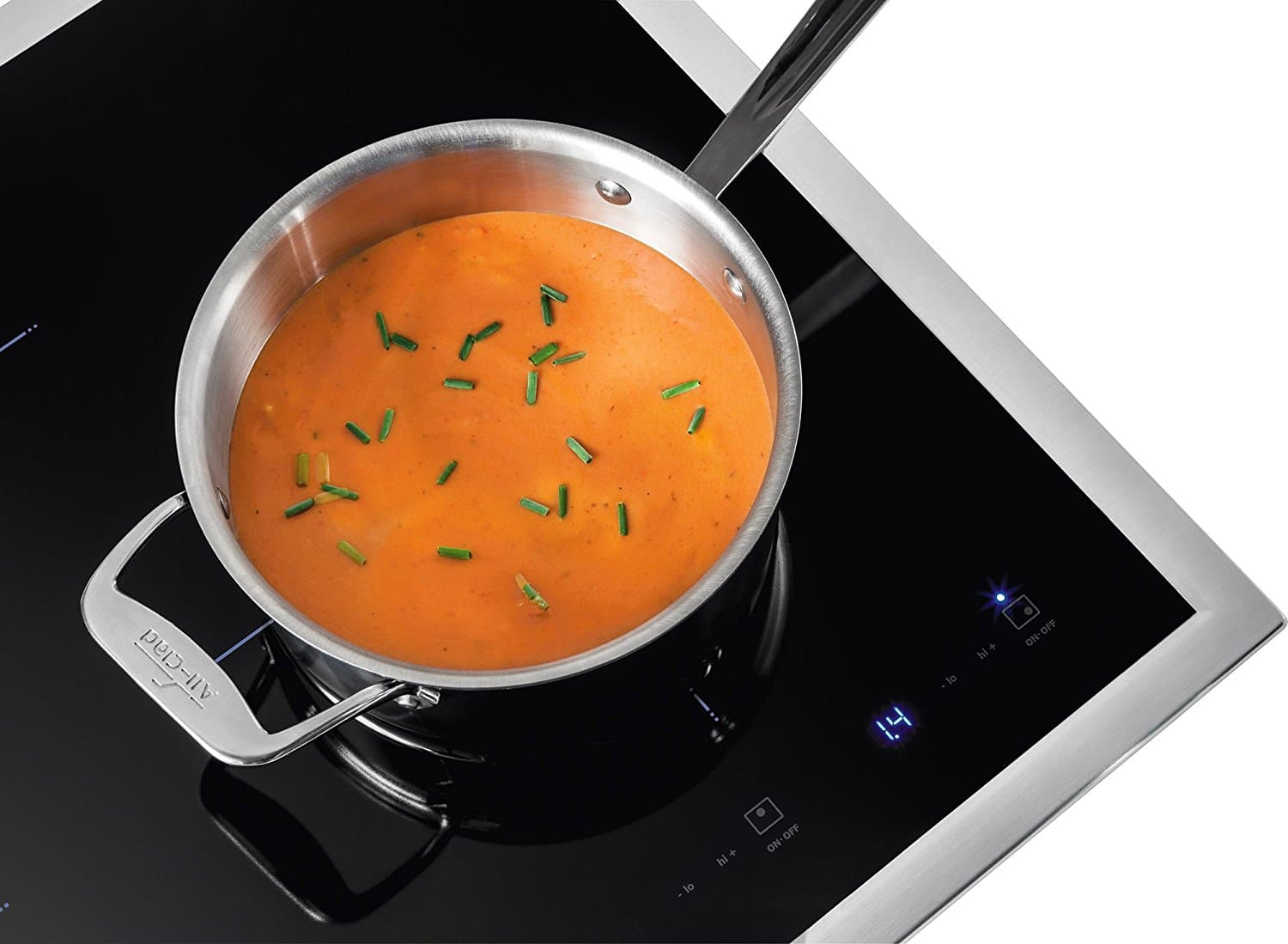
Featured Product: Electrolux Induction Cooktop
Induction cooking uses less energy than a regular electric or gas range with precise heat control and instant on/off heating. Electrolux cooktops have sensors that measure pan temperature and automatically adjusts the heat to ensure your pan maintains the temperature you set from start to finish. This offer exceptional temperature control with greater precision than gas or electric cooktops, especially at lower settings.
#6 Home Automation
Have you heard of the Internet of Things? It’s the internetworking of physical devices that allows them to send and receive data. The applications range from health care and transportation to environmental monitoring and, yes – homes. “Smart homes” are quickly becoming the norm in sustainable building. The pros at Pearl Remodeling write, “It seems like these days people expect to be able to turn on their coffee and pre-heat their ovens on the way home. With today’s technology, there is almost nothing you CAN’T control remotely. We don’t see any reason for a decline in that home design trend, in fact, quite the opposite.” Expect to see even more smart devices on the market in 2018, in all price ranges, that will do things like control and automate heating, lighting, and HVAC systems, and even appliances such as refrigerators, ovens, washers, and dryers that can use Wi-Fi for remote control and monitoring. Learn more:
Featured Product: Ecobee Smart Thermostat
The Ecobee3 lite can save you up to 23% on your heating and cooling costs (compared to a hold of 72F. ) Adjust temperature and comfort settings easily from anywhere using your Android and iOS devices, including Apple watch. Ecobee3 lite can pair with Ecobee room sensors to help manage hot or cold spots in the home delivering comfort to the rooms that matter most. (Room sensors sold separately.) It’s easy to install: everything you need is in the box. Follow along with their step-by-step guide and videos to complete the installation. Ecobee3 lite also works with your local weather, schedule, and desired comfort settings.
#7 – Water Efficiency
A staggering 40 out of 50 states anticipate water shortages in the coming years, according to a Government Accountability Office survey of state water managers. As such, using water wisely is becoming more important than ever. “Water efficiency efforts have long seen ebbs and flows based on drought conditions,” says Ryan Meres, programs director for RESNET Washington, D.C. “However, with water prices increasing as much as eight percent each year since 2010 consumer demand for more water efficient homes may reach a tipping point in 2018. Builders already getting their homes HERS Rated will soon be able to add a water rating with the launch of the new HERSH2O Index in 2018. With more than 200,000 homes getting a HERS Rating each year, HERSH2O has the potential to transform the water efficiency market.” The Federal Energy Management Program is even encouraging net zero water buildings!
Featured Product: Nebia Spa Shower
The Nebia sustainable atomizing Spa Shower System provides an immersive sensation with twice spray coverage on your body. Millions of tiny droplets envelop you, creating a premium, spa-like shower experience using a spray pattern that’s precisely contoured to the shape of the body. Best of all, it uses half the water than a regular shower. Between the water and energy savings, Nebia pays for itself; the average home saves thousands of gallons of water per year. The Nebia droplets travel at three times the velocity of an ordinary shower stream, thoroughly rinsing shampoo and conditioner from even the thickest hair. Includes tools for easy DIY installation without calling a plumber or breaking tile.
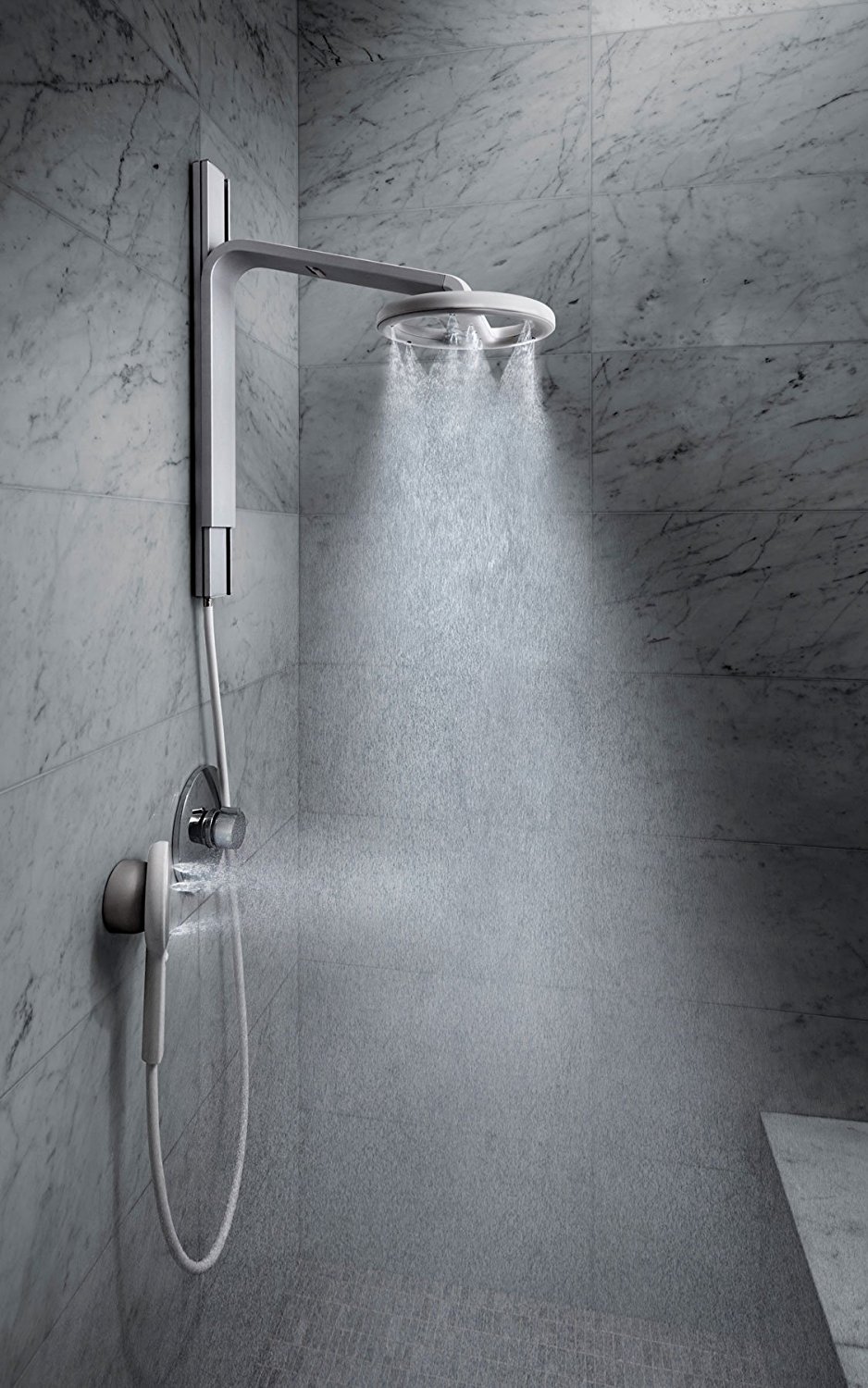
#8 Healthy Homes
Considering how much time we spend in our homes, a home that supports good health should be our first priority. As it turns out, going green has plenty of benefits for more than just the planet. Research shows that green buildings have a hugely positive impact on the health (mental and physical) of the lucky people who live and work there. Going green means improving indoor air quality, making use of natural lighting, and using eco-friendly materials — all of which contribute to your happiness, health, and productivity.
The main reason why green homes are healthier: They have excellent indoor air quality. Going green means using low- or zero-VOC paints and materials, eliminating respiratory and immune system distress commonly associated with traditional buildings. Plus, green homes typically sport excellent ventilation systems — a steady flow of fresh air into the home means no build-up of stale and polluted air. Tightened building envelopes are another feature that makes green buildings healthier. A tighter seal means less airborne irritants, like allergens and dust. Learn more:
90%
Amount of time people typically spend indoors.
2-5 X More
Amount of common indoor air pollutants compared to outdoors.
63% MORE
Amount of totally symptom-free days children with asthma experienced after moving into green homes.
Featured Product: Alen BreatheSmart Air Purifier
The Alen BreatheSmart FIT50 customizable air purifier uses a HEPA-Silver filter to remove allergies, mold & bacteria for cleaner air throughout the home. Their exclusive SmartSensor feature automatically detects and adjusts to changing air quality, prolonging filter life and conserving energy. WhisperMax technology uses pink noise to eliminate irritating high-frequency sounds, enabling the BreatheSmart FIT50 to purify the air while maintaining a peaceful home environment. Also, BreatheSmart FIT50 is fully customizable, offering four different filter types to accommodate changing air purification needs, and 14-panel color options to match your home decor. All of Alen’s air purifiers include a lifetime warranty, ensuring years of pure air for your home.
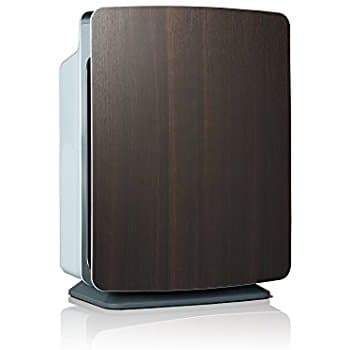
#9 – Material Transparency
With increasing concern over toxic chemicals in products, consumers are pushing for ingredient labels on everything. Without government regulation, others are filling the gap with databases like the 10 trustworthy green product databases we featured here. As transparency becomes a competitive advantage, more and more manufacturers are jumping on board. “2018 will be the year when transparency finally becomes practical,” writes Ken Edelstein, green building expert. “Understanding the ingredients of a building the way a chef understands what goes into a recipe is becoming less of novelty and more of a standard way of doing business.”
#10 – Biophilic Design
Humans evolved in nature, so it should come as no surprise that nature is biologically and psychologically beneficial to us. Still, over the last century buildings have been designed to separate us from nature – biophilic design aims to reverse that by incorporating nature and natural elements into homes. “When buildings capture the movement of the sun through the sky using windows, patterns, and architectural details, these dynamic shadows and pools of light connect us to the time of day, the season, and our inner biorhythms,” writes Amanda Sturgeon, FAIA, and CEO of the International Living Future Institute. “There is a lasting and healing power in these spaces. I started working in architecture over 20 years ago, on a mission to dissolve the walls that existed between the inside and outside. Needless to say, biophilic design has always made inherent sense to me, and I’m so excited to see it begin to emerge as a design trend.”

Featured Product: Delectable Garden Living Green Wall Planter
Delectable Garden’s indoor, waterproof 12-pocket living green wall planter brings the outdoors in. Designed specifically for indoors, lined with thick plastic on the back and bottom to prevent leakage. SUPER easy! You can put plants in their pots right in the pocket, or plant directly in pocket. Easy-to-use, lightweight, high-quality, non-toxic, feels like soft felt. Two sturdy hanging loops at the top for easy hanging. Just place a screw in the wall and hang! Made from 100% Recycled PET plastic bottles.
#11 – Innovative Materials
Year after year, innovations in green building materials continue to expand and 2018 will be no different. Recycled and reclaimed products have become widely accessible and mainstream and manufacturers are expanding into new realms with things like smart-tinting glass, materials made from food waste, and much more.
Featured Product: Timberchic DIY Reclaimed Wooden Wall Planks
Timberchic has undertaken the largest lake reclamation project in New England, and maybe even the country. This lake and river system was used to convey wood to Maine’s lumber and paper mills for over 150 years. Over that length of time, an enormous amount of wood sank to the bottom and was forgotten – until now. Their lake project is returning an undeveloped, northern Maine lake to its natural state and producing an incredibly unique product with rich colors and textures. Because it comes prefinished and is peel-and-stick applied, it is an ideal DIY product for any reclaimed wood enthusiast. Bonus: They do not use any industrial reclaimed products because of the inherent toxins.

#12 EFFICIENT SPACES
As homeowners increasingly realize that less can be more with a smaller home, the need for multifunctional design is becoming more appealing than ever. Get the most out of your space by turning little nooks and crannies into a mini hideaway or use convertible furniture to transform a room’s purpose completely. And, if you’re considering putting an addition on your home, instead of adding to the footprint, remodel with space-efficiency in mind to be more sustainable.
#13 Prefabs and Prefab Techniques
“Prefabs” or prefabricated homes were originally popular in the early 1900s when modern building was first becoming mainstream (Sears sold them in their catalog!), and now they’re back with a bang. “Factory-made prefabricated homes have come a long way from flimsy trailer park dwellings,” writes Jackie Craven for ThoughtCo. “Trend-setting architects and builders are using modular building materials to create bold new designs with lots of glass, steel, and real wood. Prefabricated, manufactured and modular housing comes in all shapes and styles, from streamlined Bauhaus to undulating organic forms.” (Here are 18 options almost anyone can afford!)
#14 – Living in Place
Homeowners and their families are increasingly staying put, opting for renovations like design elements intended to aid aging-in-place (which continue to top the American Institute of Architects’ quarterly reports). “Not surprisingly, demand for greater accessibility features continues to be strong,” said AIA chief economist, Kermit Baker. “Whether it’s a result of generally lower mobility or the aging baby-boomer population, homeowners are preparing for the future.” And families are sticking together. “It looks like multigenerational living is here to stay,” writes Mary Cook, founder of interior design firm Mary Cook Associates Chicago for Builder Online. “Not since the 1950s have so many families chosen to live with multiple adult generations under one roof, according to Pew Research, challenging designers and builders to maximize efficiency without compromising style. Home builders are learning quickly that privacy and accessibility are two must-haves for multigenerational living.”
Featured Product: Kohler Bidet Toilet Seat
Experience a new level of cleansing for daily comfort and confidence. This advanced C3 toilet seat with cleansing functionality uses naturally soothing water as a refreshing, hygienic alternative to toilet tissue. A remote control lets you instantly adjust the water spray for position, temperature, and oscillating or pulsating motion–and you can store preferred settings for two users. Other amenities include a heated seat with three adjustable temperature settings, an LED light that illuminates the bowl to serve as a night-light, and warm-air drying system with adjustable air speed and temperature.
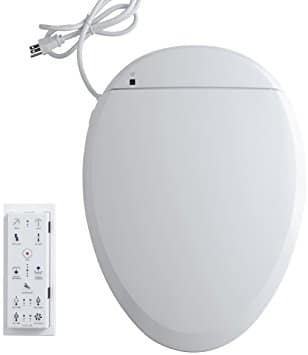
#15 Sustainable Landscaping
Extend sustainability outside your home this year by making your yard environmentally friendly. While a perfectly manicured grass lawn was once the ideal, 2018 is bringing native, drought-tolerant, low-maintenance plants to replace some of that turf. By creating a less rigid landscape with these types of trees, shrubs, and plants, you can help conserve water, fertilizer, and pesticides – plus help support local wildlife. Another popular option is growing your own food. Builder reports that herb and vegetable gardens platen in raised beds are surging in popularity.

Featured Product: Outsidepride Miniclover
Miniclover® (Trifolium repens) is a perennial clover which is great to use in lawn mixtures as a natural fertilizer. White clover takes nitrogen out of the air, bringing this most essential fertilizer “down-to-earth” by means of nitrogen-fixing bacteria living in nodes along the roots. Of course, all at no cost to you, in terms either of money or of maintenance. Miniclover®, a very small leaved white clover only reaching approximately 4 inches in height, also produces stolons so that it can spread itself evenly over the ground. It’s a great, sustainable lawn alternative or addition. Adding just 2 – 5% of Miniclover® to the turf seed mixture will result in a much-improved lawn.

#16 – Affordable Sustainability
As prices drop across the board – from renewable energy options to prefab building techniques to eco-friendly building materials – having a sustainable home is more affordable than ever before. Plus, homeowners are increasingly getting wise to the long-term savings associated with going green: lower energy bills, lower water bills, and fewer upkeep costs. Learn tips and tricks to make your home more sustainable on a budget in this article about the Top 10 Myths About Green Home Remodeling.
#17 – Standards, Codes & Rating Systems
Don’t get lost in the acronyms, but at the November 2017 Greenbuild conference in Boston we saw representation from a flurry of certifying organizations including LEED, WELL, SITES, Fitwel, ILFI, GRI, JUST, ISSP, IWBI, BREAAM US, GBCI, and more. “2018 will be a watershed year in the course of green building standards, codes and rating systems,” writes Stuart Kaplow for Green Building Law Update. “There has been no other single calendar year that has seen the breadth of substantive change that is before us…it is clear that the real estate industry is developing out of its green building adolescence. Earlier versions of these green building standards, codes and rating systems were largely written in silos by partisans. What appears to be on the horizon in 2018 is the democratization of green building, in the U.S. and abroad.”
#18 – Green Goes Mainstream
In the best news of all, green seems to finally have gone mainstream. Yay! “The accelerating adoption of green building practices may transform sustainable construction from movement to norm,” writes Jeff Gavin, LEED Green Associate. “Globally, the green building market is doubling every three years, as revealed in ‘The World Green Building Trends 2016 Smart Market Report’ by Dodge Data and Analytics, New York. While mandates make sustainable building a bigger force abroad, its rapid adoption in the United States is even more remarkable given its voluntary and value-driven approach. Green is now mainstream, which is reflected in ever more stringent codes, communities and states that institutionalize green practices, and owners and the real estate market are endorsing its value.”
As you can see there’s a lot to look forward to in regards to sustainable home design as we move into 2018. We can’t wait to reveal even more good news from the green building scene as the year progresses.
Happily, green building is moving much more into the mainstream and once things reach a positive tipping point, the wasteful ways of the past will seem as primitive as a steam locomotive.


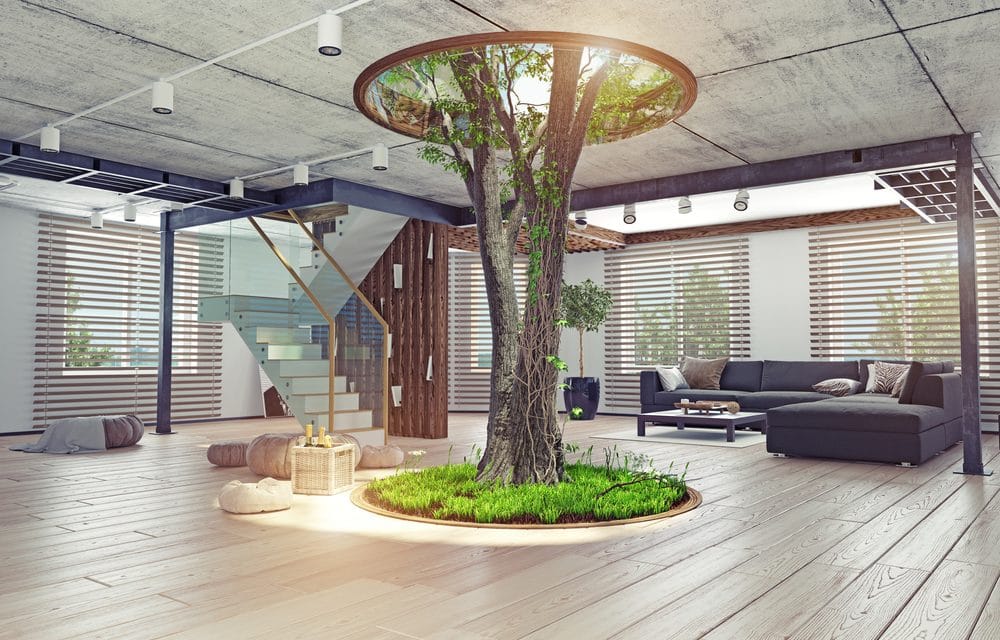
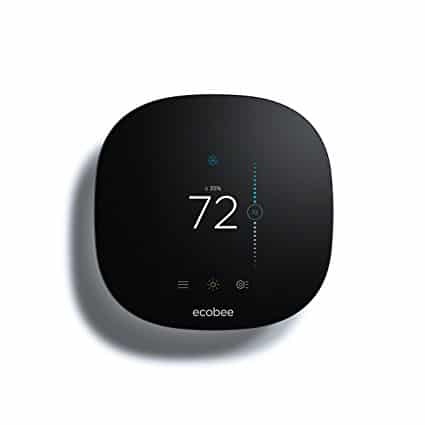



![10 Steps Toward a Zero Energy Home [Infographic]](https://elemental.green/wp-content/uploads/2016/04/cbfb-440x264.jpg)

